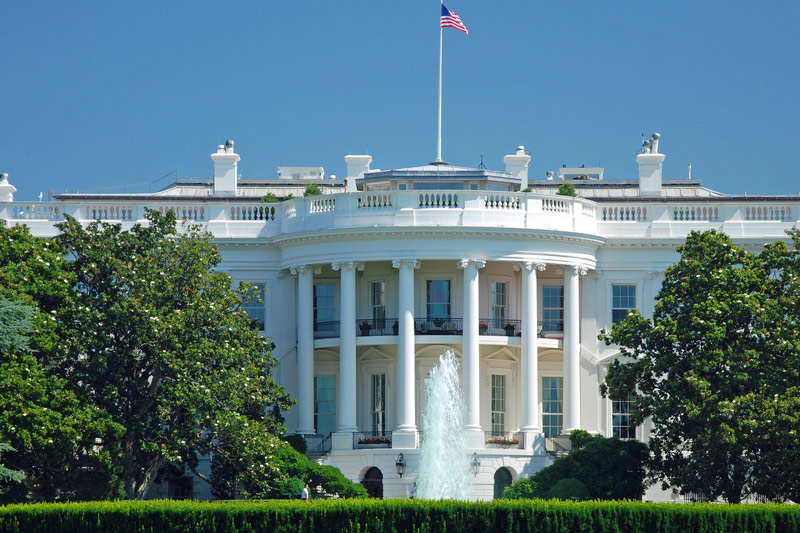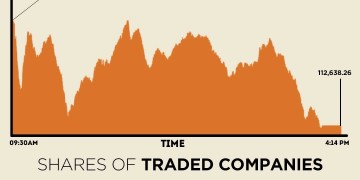 White House Threatens New Iran Sanctions as Arrests Continue
White House Threatens New Iran Sanctions as Arrests Continue(Bloomberg) — The Trump administration said it may impose new sanctions on Iran as the number of civilians arrested in spontaneous nationwide protests that began last week neared 1,000.
“We certainly keep our options open” on adding to U.S. sanctions on Iran, White House press secretary Sarah Sanders said Tuesday in her daily briefing. President Donald Trump took to Twitter earlier in the day to say the “people of Iran are finally acting against the brutal and corrupt Iranian regime.”
U.S. Ambassador to the United Nations Nikki Haley told reporters there are no unilateral plans to take action against Iran but that she’ll be calling for an emergency session of the Security Council to discuss the crisis. She also rejected Iranian government accusations that protests have been directed by foreign powers.
“We must not be silent,” Haley said. “The people of Iran are crying out for freedom.”
Rising Prices
Unrest in Iran began Dec. 28 with a rally against rising prices and the government’s handling of the economy, before turning into a wider protest against the political establishment. Nine people were killed in various cities during clashes Monday, according to state-run television, bringing the death toll to about 20. Since Saturday, 450 people have been held in the capital Tehran, 150 were arrested in Hamedan and an additional 138 have been detained in Mashhad, according to local officials.
The U.S. threat comes ahead of a congressional deadline Trump faces this month on whether to continue waiving sanctions that were frozen under the 2015 nuclear deal between Iran and world powers. Trump last year declined to certify Iran’s compliance with the agreement, though Congress didn’t act on a provision allowing lawmakers to reimpose the nuclear-related sanctions within 60 days. Trump could also announce new sanctions unrelated to the accord. Sanders said Trump hasn’t made a final decision on the next sanctions waiver.
Oil hovered close to a 30-month high as the unrest in Iran heightened concern about potential supply disruptions in OPEC’s third-biggest crude producer. The country pumps about 3.8 million barrels a day.
The crisis gives Trump an opportunity to pressure critics of his approach to Iran and the nuclear accord, which he has long criticized as the “worst deal ever.” And by publicly praising protesters, Trump is also separating himself from the approach President Barack Obama took to street demonstrations that followed Iranian elections in 2009. At the time, the Obama administration said too much American support for protesters would only delegitimize their cause.
Counselor to the president Kellyanne Conway made that point directly on Tuesday, telling Fox News that Trump “doesn’t want to remain silent the way too many people were silent in 2009.”
Referring to sanctions that were eased as a result of the nuclear deal, Trump tweeted on Tuesday that “All of the money that President Obama so foolishly gave them went into terrorism and into their ‘pockets.’ The people have little food, big inflation and no human rights. The U.S. is watching!”
Trump’s tweets on the protests have drawn both anger and ridicule from Iranians, who point to the inconsistency between his apparent support for them and his policy to bar them from getting U.S. visas. Iranian politicians are likely to use the president’s remarks to suggest that the U.S. and Saudi Arabia, Iran’s chief regional rival, are stoking unrest to weaken the Islamic Republic.
Read a QuickTake Q&A on how Iran’s economic strains helped stoke protests
“The demonstrations are completely spontaneous,” Haley said at the UN. “They are in virtually every city in Iran.”
The protests are a rare public display of anger against a political establishment that has kept a tight grip on power since the 1979 Islamic Revolution against the pro-Western shah. The demonstrations, however, are smaller than the 2009 protests and don’t pose an “existential” threat to the regime, according to Trita Parsi, head of the National Iranian American Council.
“I don’t think it will lead to a revolutionary situation,” Parsi told Bloomberg TV. “It doesn’t seem to have the organization and the leadership to really pose an existential threat to the regime, but it can really force to change the conversation and shake up the political landscape.”
Now, the protests may be slowing. There were no demonstrations or gatherings on Tuesday evening in downtown Tehran’s Enghelab Square (NYSE:), the vast intersection close to Tehran University that has historically been a focus of political protests in the capital and was the site of protests over the weekend.
Black armored police vans dotted the corners of the square. Scores of uniformed regular police holding batons and riot police clad in black anti-riot gear were deployed in the middle of the square and lined the main thoroughfare bisecting it, Enghelab Street.
Many shops closed early while others were back to regular hours after having been forced to shut down over the past few nights because of clashes.
“They’re not out tonight, thank God,” said a shop owner who didn’t want to be named because of the sensitivity of speaking to foreign media.
Authorities have said there will be little leniency over violence. Iran’s Judiciary Chief, Ayatollah Sadeq Amoli Larijani, ordered prosecutors to take “serious measures” in dealing with rioters vandalizing public properties during the recent protests, Tasnim news agency reported.
While Iran’s president is elected every four years by a popular vote, his influence is kept in check by unelected officials within the judiciary and the powerful Revolutionary Guard Corps, whose job is to protect the principles of the 1979 Islamic Revolution. Ultimate authority rests with Supreme Leader Ayatollah Ali Khamenei.
In his first remarks since the protests broke out, Khamenei accused Iran’s enemies of stoking unrest, without naming anyone.
‘Iran’s Enemies’
“Over the last few days, Iran’s enemies have used various tools at their disposal including money, weapons and security bodies in order to create problems for the Islamic system,” he said.
President Hassan Rouhani, who was elected for a second term last year, promised voters improved living conditions after the 2015 agreement that called for easing international sanctions on Iran in return for curbs on its nuclear program. His supporters point to a dramatic drop in the inflation rate to about 10 percent from more than 40 percent under his hard-line predecessor.
Foreign investments, however, have been slow to follow, with investors concerned most recently about Trump’s threats to tear up the accord.
“If there is a kind of scapegoat to Iran’s economic problems post the nuclear deal, it would be the U.S. administration,” Jean-Paul Pigat, Dubai-based head of research at Lighthouse Research, told Bloomberg TV. “Donald Trump continues to threaten to renegotiate the nuclear deal. That does not encourage foreign investors to enter the market.”
(Updates with White House comment in second paragraph.)
Source: Investing.com




























